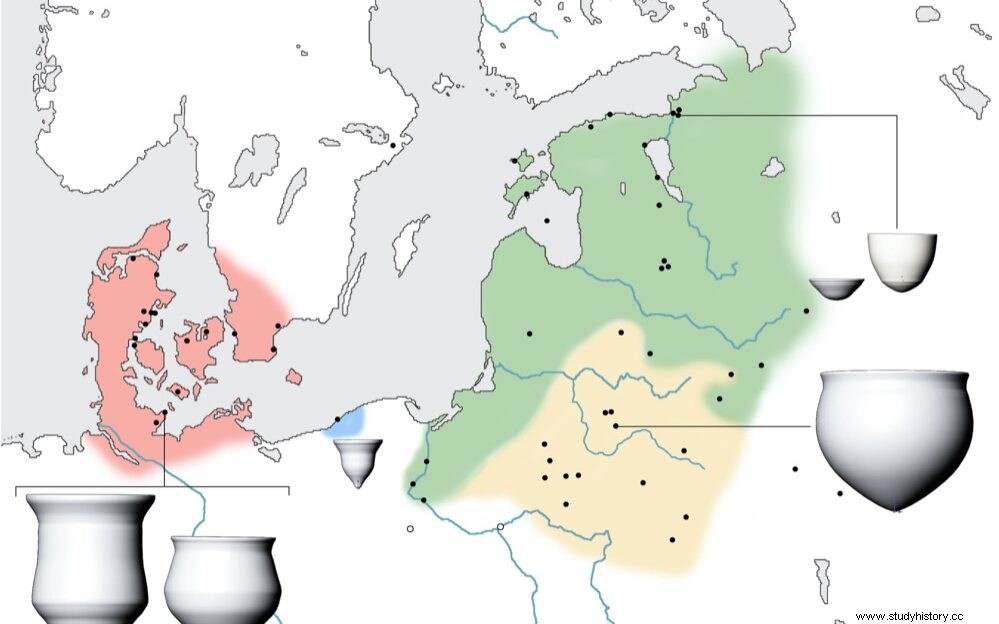Hunter-gatherer groups who lived on the shores of the Baltic between 7,500 and 6,000 years ago had culturally distinct culinary tastes, analysis of ancient pottery shards has revealed.
An international team of researchers analyzed more than 500 hunter-gatherer pots from 61 archaeological sites across the Baltic region. They found striking contrasts in food preferences and cooking practices between different groups, even in areas where there was similar availability of resources. The pots were used to store and prepare foods ranging from marine fish, seals, and beavers to wild boar, bear, deer, freshwater fish, hazelnuts, and plants.
The findings suggest that the culinary tastes of ancient peoples were not only dictated by the foods available in a given area, but were also influenced by the traditions and habits of cultural groups.

According to one of the study's authors, Dr. Harry Robson of the Department of Archeology at the University of York:People are often surprised to learn that hunter-gatherers used pottery to store, process and cook food, as carrying cumbersome ceramic pots seems incompatible with a nomadic lifestyle. Our study examined how this pottery was used and found evidence of a rich variety of foods and culinary traditions in different hunter-gatherer groups.
The researchers also identified unexpected evidence of dairy products in some of the ceramic vessels, suggesting that some hunter-gatherer groups were interacting with early farmers to obtain this resource.
According to Robson:The presence of milk fats in various hunter-gatherer vessels was an unexpected finding of culinary ‘cultural fusion’ . The discovery has implications for our understanding of the transition from the hunter-gatherer lifestyle to primitive agriculture and demonstrates that this product was traded or perhaps even looted from nearby farmers.
Lead author of the study, Dr Blandine Courel, of the British Museum, added:Although the common biota provided many marine and terrestrial resources for their livelihoods, the hunter-gatherer communities of the Baltic Sea basin they did not use ceramics for the same purpose.
Our study suggests that culinary practices were not influenced by environmental constraints, but were probably embedded in some long-standing culinary traditions and cultural habits.

In the study, led by the British Museum's Department of Scientific Research, the University of York and the Center for Baltic and Scandinavian Archeology (Stiftung Schleswig-Holsteinische Landesmuseen , Germany), molecular and isotopic techniques were used to analyze the ceramic fragments.
According to Professor Oliver Craig of the York University Department of Archaeology:The chemical analysis of food remains and natural products prepared in pottery has already revolutionized our understanding of early agricultural societies, we are now seeing how these methods they are being applied to study prehistoric hunter-gatherer pottery. The results suggest that they too had complex and culturally distinct cuisines.
